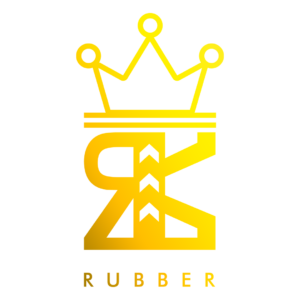Transforming The Rubber Industry With Synthetic Rubber Technology
Synthetic rubber technology is rapidly transforming the industry by providing an alternative to natural rubber. The production and usage of synthetic rubber have increased over the last few decades due to its many advantages over natural rubber. This technology has revolutionized the way rubber products are made, used, and recycled and is set to shape the future of the rubber industry.
Synthetic rubber technology is a product of years of research and development to find a cost-effective and sustainable alternative to natural rubber. The technology has enabled the production of a wide range of rubber products that would not have been possible with natural rubber. From car tires to surgical gloves, synthetic rubber has found its way into almost every aspect of our lives. This article will explore the history and development of synthetic rubber technology, its types and properties, and its advantages over natural rubber, with the aim of providing a comprehensive understanding of this transformative technology.
Overview
The present section provides a comprehensive survey of the current state of affairs in materials science, particularly emphasizing the latest advancements in developing innovative products and processes for commercial applications. Synthetic rubber technology is a revolutionary innovation transforming the industry by offering various advantages over natural rubber. Synthetic rubber applications are diverse and widespread, from automobile tires to footwear, industrial hoses, and medical equipment.
Market trends reflect the increasing demand for synthetic rubber, driven by the growth of end-user industries such as automotive, construction, and healthcare. The global synthetic rubber market is projected to reach USD 45.8 billion by 2027, registering a CAGR of 5.3% from 2020 to 2027. The key drivers of this market growth are the superior properties of synthetic rubber, such as high durability, chemical resistance, and cost-effectiveness compared to natural rubber.
The prospects of synthetic rubber technology are promising as researchers and manufacturers continually explore new formulations and applications to meet evolving consumer needs. The development of sustainable synthetic rubber, using renewable resources and reducing carbon footprint, is a key area of focus. Additionally, the use of advanced technologies such as nanotechnology and biotechnology holds great potential for enhancing the properties and performance of synthetic rubber. As such, the synthetic rubber industry is poised for continued growth and innovation in the years to come.
Production and Usage
This section delves into the processes of manufacturing synthetic rubber, which has seen widespread adoption in various applications. Synthetic rubber is a crucial component of several industries, such as the automotive, construction, and consumer goods sectors. The production of synthetic rubber involves a complex chemical process where various monomers are polymerized to form a rubbery substance. The two most common processes used in the production of synthetic rubber are emulsion polymerization and solution polymerization.
The demand for synthetic rubber has risen significantly over the years, driven by market demand and sustainability practices. Synthetic rubber has become a preferred alternative to natural rubber due to its consistent quality, high durability, and excellent resistance to environmental factors. Synthetic rubber has also been able to meet the growing demand for rubber while reducing the environmental impact of rubber production. Synthetic rubber has reduced the adverse effects of rubber production on the environment, such as deforestation, soil degradation, and habitat destruction.
Synthetic rubber has revolutionized several industries, such as the automotive sector, where it is used to produce tires and other automotive components. The use of synthetic rubber in the construction sector has also seen significant growth, with its use in roofing materials, flooring, and insulation. The consumer goods sector has also embraced synthetic rubber, which is used in producing various household items such as gloves, footwear, and toys. Synthetic rubber has proven to be a versatile and sustainable material that has transformed the rubber industry, and its demand is expected to grow.
Synthetic and Natural Rubber
The adoption of synthetic rubber over natural rubber has brought about several advantages that can positively impact various industries and the environment. Synthetic rubber technology has been around since the early 20th century and has been continuously improved to meet the demands of modern industries. Synthetic rubber is made from petroleum-based materials, which makes it more cost-effective than natural rubber. Also, synthetic rubber provides consistent quality and performance, unlike natural rubber, which can vary in quality depending on the source.
The sustainability benefits of synthetic rubber are undeniable. The production of natural rubber requires a vast amount of land, water, and energy. It also contributes to deforestation, which leads to the loss of biodiversity and the emission of greenhouse gases. On the other hand, synthetic rubber can be produced in a controlled environment, using fewer resources and less land. It also has a longer lifespan, which means that fewer tires and other rubber products need to be replaced, reducing waste and saving resources.
Performance-wise, synthetic rubber has many advantages over natural rubber. Synthetic rubber can be formulated to meet specific requirements, such as durability, heat, and chemical resistance. This makes it ideal for high-performance applications like tires, seals, and hoses. Synthetic rubber also has better-aging properties, meaning it can withstand exposure to sunlight, oxygen, and other environmental factors for longer periods without deteriorating. In contrast, natural rubber tends to break down faster, especially when exposed to heat, sunlight, and chemicals.
In summary, adopting synthetic rubber technology over natural rubber has brought numerous advantages that positively impact various industries and the environment. Synthetic rubber is more cost-effective, provides consistent quality and performance, and has better sustainability benefits. Furthermore, synthetic rubber can be formulated to meet specific requirements, making it ideal for high-performance applications. As the demand for rubber products continues to grow, synthetic rubber technology will undoubtedly play an essential role in meeting this demand sustainably and efficiently.
History and Development
It could be argued that the section on History and Development, while seemingly less exciting than the advantages of synthetic rubber, is ironically the foundation upon which the entire synthetic rubber industry was built. The production of synthetic rubber began in the early 20th century as scientists recognized the need for a reliable alternative to natural rubber. The first synthetic rubber was created by the German chemist Fritz Hofmann in 1909, but it was not until the 1930s that synthetic rubber production became feasible on an industrial scale.
Innovation milestones were reached throughout the 20th century as key players in the industry continued to develop new and more efficient methods for creating synthetic rubber. The United States, in particular, played a significant role in developing synthetic rubber technology during World War II. This was due to the country’s shortage of natural rubber from Southeast Asia, which was cut off by the Japanese occupation. The US government invested heavily in the synthetic rubber industry, funding the construction of new plants and sponsoring research and development.
Today, synthetic rubber has had a significant global impact, particularly in the automotive industry. It has become an essential component in manufacturing tires, belts, hoses, and other automotive parts. Synthetic rubber has also found use in many different industries, including construction, aerospace, and medical. The continuous innovation in synthetic rubber technology has produced new, more durable, and environmentally friendly materials. The future of synthetic rubber is promising, with new advancements and applications continually being developed.
Types and Properties
The examination of the diverse categories of synthetic rubber and their properties offers a comprehensive understanding of the immense potential and versatility of these materials in various industrial applications, stimulating curiosity and awe among readers. Synthetic rubber is a man-made material, different from natural rubber, produced through various manufacturing processes. It is formed by the polymerization of monomers, which are the building blocks of rubber and is often used as a substitute for natural rubber in several applications.
The physical properties of synthetic rubber are highly dependent on the chemical composition and manufacturing processes used to produce it. Generally, synthetic rubber offers better resistance to heat, oil, and chemicals than natural rubber, and as a result, it is often used in applications where these properties are required. Some common types of synthetic rubber include neoprene, nitrile, silicone, and butyl rubber, each with its unique physical and chemical properties, making them suitable for different applications.
Manufacturing processes used to produce synthetic rubber include emulsion polymerization, solution polymerization, and dispersion polymerization. Emulsion polymerization is the most common method, and it involves the production of a stable emulsion of monomers in water. Polymerization is initiated by adding a catalyst, and the resulting polymer is then coagulated and dried. Understanding synthetic rubber’s properties and manufacturing processes is essential in selecting the right material for specific applications, ensuring optimum performance and durability.
Conclusion
The production of synthetic rubber has revolutionized the rubber industry and has become a significant contributor to the global economy. This technology has provided numerous benefits over natural rubber, including better durability, resistance to weathering and chemicals, and consistent quality. The history and development of synthetic rubber are fascinating and have paved the way for various types of rubber with distinct properties.
Synthetic rubber is used in various industries and applications, from automobile tires to medical gloves. Its production has also helped to reduce the dependency on natural rubber, which is prone to price fluctuations and supply chain disruptions. However, the transformation of the rubber industry with synthetic rubber technology is not yet complete. There is still a need for further research and development to enhance the properties of synthetic rubber and make it more sustainable and cost-effective.
In conclusion, the future of synthetic rubber is promising, and it will continue to play a crucial role in the global economy. With technological advancements and increasing demand for sustainable materials, the potential for synthetic rubber is endless. The rubber industry will continue to evolve, and we can expect more innovative solutions to emerge. As we embrace the transformation of the rubber industry, we can look forward to a future where synthetic rubber technology will be a key player in shaping our world.

